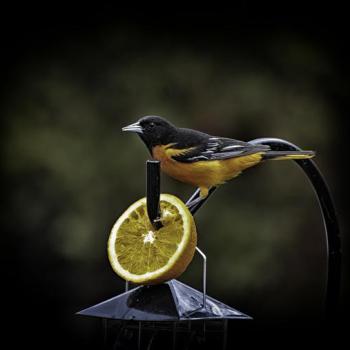
I am a bit of a snob about books, and about books of a religious nature especially. I’ve admitted this in my now-famous rant about poorly made and kitschy art for Jesus. I think that a book of meditations on God needs to have a good “tooth” to it, to be beautifully written but also stimulate the intellect, for it to be worth anything, and I’ve been disappointed far too many times by popular books of this sort. Imagine my apprehension when I was asked to read and blog about Taste And See: Experiencing the Goodness of God with Our Five Senses by Ginny Kubitz Moyer, another Catholic mom author like me. And, imagine my delight at finding out that it’s really quite good.
Taste And See is a collection of short, vivid descriptions of the author’s experiences discovering God through her five senses. Each description followed by a set of prompts for an Ignatian meditation based on the Examen using the reader’s own experience similarly. Moyer will describe a numinous experience she once had watching incense smoke rise to the ceiling of a dark church, or a recollection of her delight at a box of crayons, and then she’ll have a guided meditation for the reader to use, thinking about our own experience of color or a numinous experience. The descriptions are grouped according to sense, five chapters on sight, five chapters on hearing, and so on through all five senses. Moyer suggests in the introduction that we read one chapter and perform one Ignatian meditation per day. I am a work-from-home mom and usually do my reading stuck in the house with Power Rangers or my daughter’s Starfall touchscreen homeschool lessons blaring in the background, so I chose to go about it differently; I read the descriptions whenever I got the chance, several in a sitting, and came back to the meditations when I could find a bit of silence.
The descriptions themselves are simply written but beautiful, relatable and extremely rich. Sometimes she will write about a whole period in her life characterized by a sensory experience– the “Catholic Guilt” and eventually the understanding and comfort arising from the confessional, for example. Sometimes there’s an in-depth description of a single experience, such as walking through a rose garden. As a writer myself, I find that universalizing the particular, taking a single specific sensory experience from my own life and relating it so truthfully that it points to a universal human experience, is the best way to get a meaning across. It’s far better than trying to preach your meaning without grounding it in an image first. “Show, don’t tell” is a rule that applies to all writing, not just fiction. And this is exactly what Ginny Kubitz Moyer does with her descriptions in Taste and See. Everything begins with her own, personal sensory experience and builds upon what she discovered from that. She shows, and then she tells. The descriptive passages are quite fun, and ideal for busy mom reading because they’re so short. Taste and See is a good book to take in the bathtub, or to tuck into a purse for an afternoon at the playground, or to read bit by bit while you’re up and down making dinner. As someone who’s studied phenomenology, I sometimes found myself disappointed at a chapter’s end, wishing that Moyer would just go on for a thousand pages on one of her descriptions, telling me everything there is to know about color or sound, but there are other books that do that, and a simple set of descriptions for easy reading are perfectly good in their own way as well.
The meditations at the end of each chapter were a useful find for me. I try to make time for silent meditation every single day, but so often I don’t know what to do with myself during those precious moments of silence. Feeling too free leads to distraction and annoyance. I often like to have a bit of structure to point the way. Now, I prefer to meditate with my eyes closed, so opening them every few minutes to read the next prompt on Moyer’s list is a bit distracting; instead, I prefer to read them all the way through and then follow the basic framework of her suggestions, not minding too much if I end up meditating differently than the instructions stated. As far as I know that’s in the spirit of Ignatian meditation anyway. It is a relief to be specifically told to meditate on things in my own sensory experience and come to God through them, rather than trying to meditate on Jesus and seeing everything that flies through my head as a distraction. I love color, music and pleasant smells, and it’s nice to be told to use those things as a way to begin speaking to God instead of as something to lay aside for prayer’s sake.
In short, Taste And See: Experiencing The Goodness of God With Our Five Senses by Ginny Kubitz Moyer comes with my highest recommendation as a simple but rich guide for those who wish to learn to meditate in the Ignatian tradition, and also just as a book of fun little tributes to the beauty of the natural world. I would certainly read it again.

















